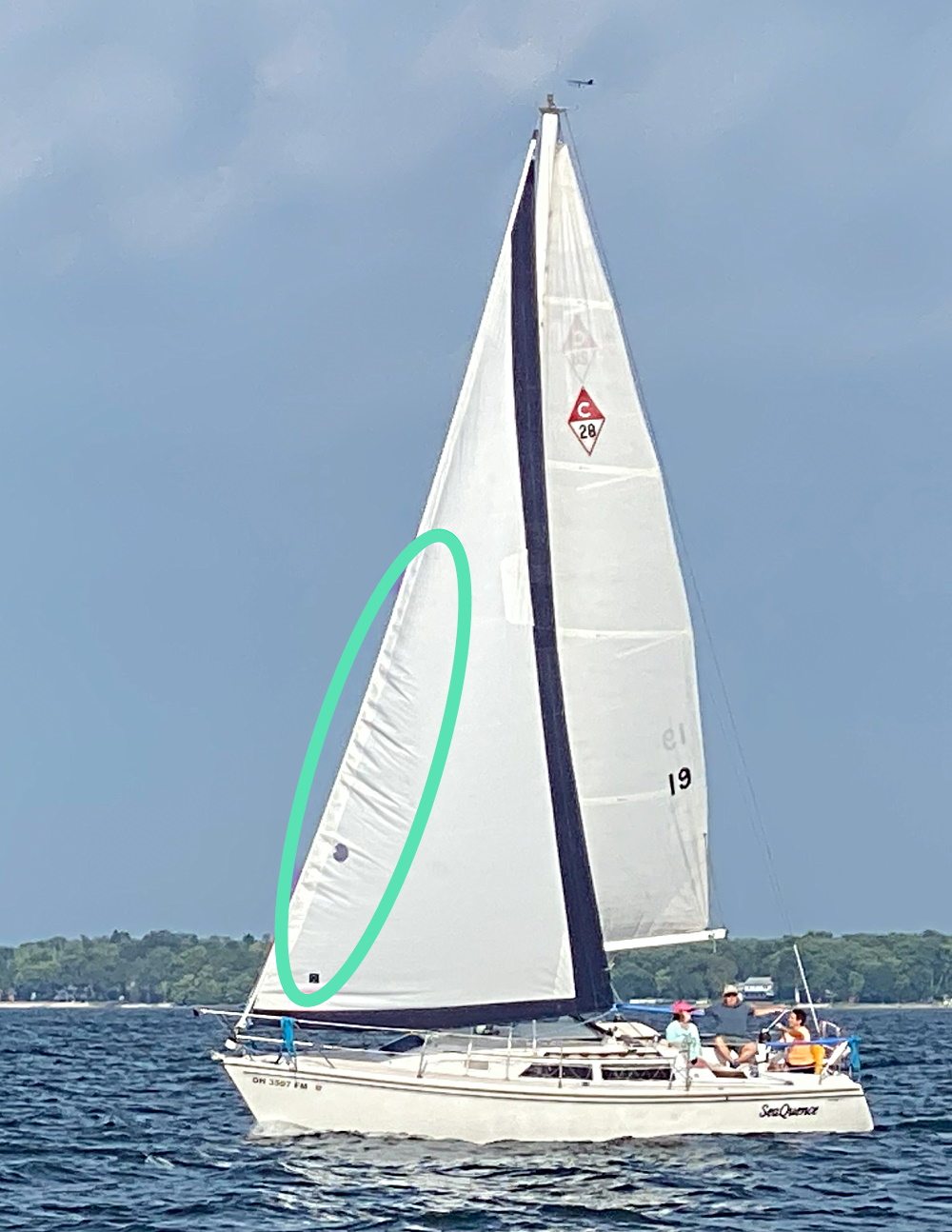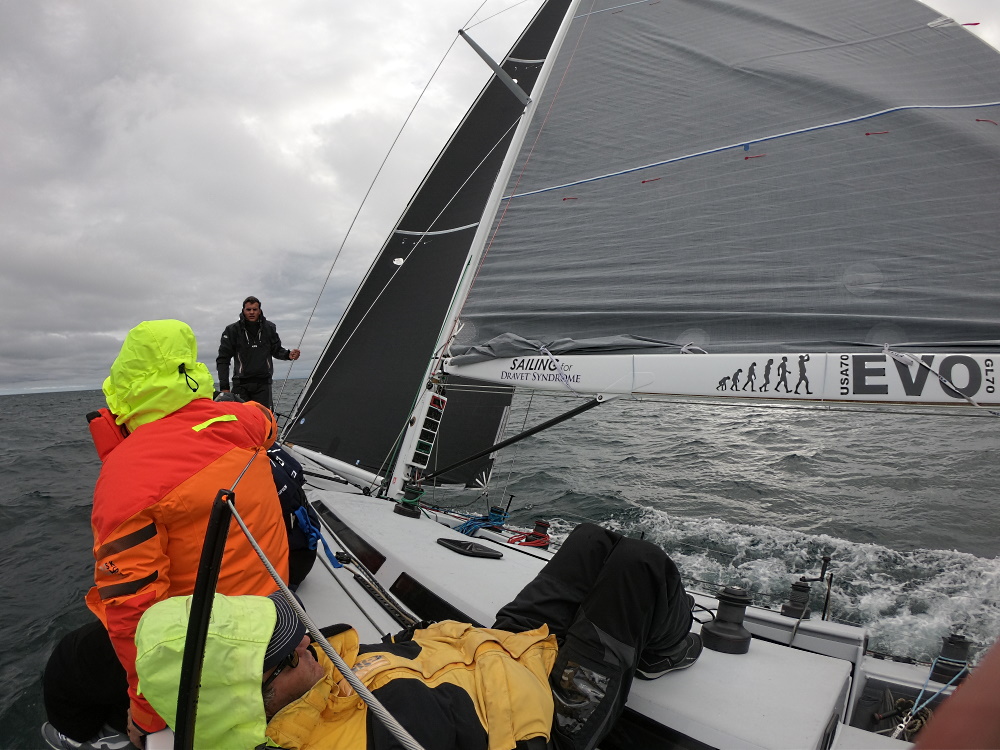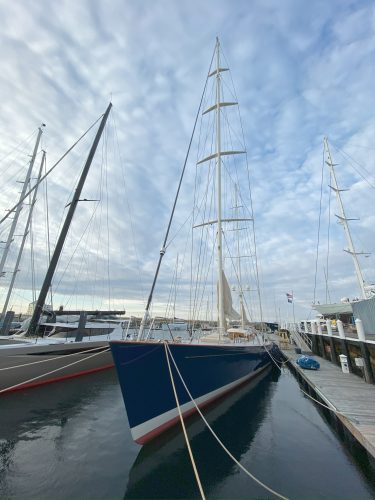Table of Contents
Sail shape plays a crucial role in the performance of a sailboat, and one of the key factors affecting sail shape is the halyard line. This article explores the importance of selecting the best line for for halyards on a sailboat and delves into how halyard stretch can impact sail shape and overall performance. We will discuss various types of lines suitable for sailboat halyards and provide insights into how their characteristics affect sail shape. Understanding these dynamics will help sailors make informed decisions when choosing halyard lines for their sailboats.
Popular Types of Lines for Sailboat Halyards
Polyester
The durable and low-stretch properties of polyester make it a popular choice for halyard lines. Its resistance to UV rays and grip in winches and cleats make it easy to handle, and it is available in various diameters and strengths to suit different sailboat sizes and applications.
Dyneema/Spectra
High-performance synthetic fibers like Dyneema and Spectra offer exceptional strength-to-weight ratios and minimal stretch. These lines are ideal for halyards due to their low stretch properties, UV resistance, and abrasion resistance. Although they may be more expensive than polyester, their superior performance makes them attractive options for performance-oriented sailboats.
Technora
Technora is another high-performance fiber known for its strength and heat resistance. It shares similar properties to Dyneema and Spectra but offers enhanced heat resistance. Technora halyards are commonly used in racing applications where high loads and extreme conditions are expected.
Vectran
Vectran is a liquid crystal polymer fiber with high strength and low stretch characteristics. It is resistant to UV radiation and abrasion, making it suitable for halyards. Vectran lines provide good handling and are often favored for performance-oriented sailboats.
The Impact of Using Low-Quality Line For Halyards

Luff Sag
Halyard stretch allows the sail’s luff to move upward, resulting in luff sag or belly. This sagging disrupts the designed sail shape and reduces its efficiency. Properly tensioned halyards are crucial for maintaining the desired curvature of the sail’s leading edge, ensuring optimal performance.
Draft Position
Halyard stretch can shift the position of the sail’s draft, which is the maximum curvature or belly of the sail. As the halyard stretches, the tension on the luff decreases, causing the draft to move higher on the sail. This change in draft position can affect the balance and performance of the sail, leading to reduced speed and pointing ability.
Sail Twist
Halyard tension plays a significant role in controlling the amount of twist in the sail. Stretching halyards can reduce tension on the luff, leading to excessive twist in the upper part of the sail. Excessive twist can result in power loss, reduced control, and an unbalanced sail plan.
Sail Control and Trim
Inaccurate halyard tension due to stretch can make it challenging to achieve and maintain proper sail trim. Stretching halyards may require frequent adjustments to maintain the desired sail shape, increasing the workload for the crew and diminishing overall sailing efficiency.
Selecting the Best Line for Halyards
Considerations
When choosing halyard lines, factors such as load-bearing capacity, low stretch, durability, handling, and weight must be taken into account. The line should have sufficient strength to handle the expected loads without excessive stretching or risk of failure. Low-stretch lines help maintain proper sail shape, while durability ensures longevity and resistance to UV radiation, saltwater, and abrasion.
Recommendations
Lines made of polyester, Dyneema, Spectra, Technora, or Vectran are commonly used for sailboat halyards. Polyester lines offer good all-around performance and affordability. High-performance fibers like Dyneema, Spectra, Technora, and Vectran provide excellent strength, low stretch, and increased performance, albeit at a higher cost. The choice depends on the specific requirements, sailing style, and budget of the sailor.
Sailboat Halyard Line Diameter Guide
The following is a general guideline for sailboat lengths and the associated halyard line diameter:
- Sailboat Length: Up to 20 feet – Halyard Line Diameter: 3/16″ to 5/16″ (4-8 mm)
- Sailboat Length: 20-25 feet – Halyard Line Diameter: 5/16″ to 3/8″ (8-10 mm)
- Sailboat Length: 25-30 feet – Halyard Line Diameter: 3/8″ to 7/16″ (10-11 mm)
- Sailboat Length: 30-35 feet – Halyard Line Diameter: 7/16″ to 1/2″ (11-13 mm)
- Sailboat Length: 35-40 feet – Halyard Line Diameter: 1/2″ to 9/16″ (13-14 mm)
- Sailboat Length: 40-45 feet – Halyard Line Diameter: 9/16″ to 5/8″ (14-16 mm)
- Sailboat Length: 45-50 feet – Halyard Line Diameter: 5/8″ to 3/4″ (16-19 mm)
- Sailboat Length: 50-60 feet – Halyard Line Diameter: 3/4″ to 7/8″ (19-22 mm)
- Sailboat Length: 60+ feet – Halyard Line Diameter: 7/8″ and above (22 mm and above)
Best Line To Purchase For Halyards
Please note that these recommendations are approximate and can vary depending on factors such as boat design, anticipated loads, sailing conditions, and personal preferences. It’s important to consult with the sailboat manufacturer, riggers, or experienced sailors to determine the specific halyard line diameter recommendations for your sailboat based on its specifications and intended use.
Seeking Expert Advice
Consulting with sailmakers, riggers, or experienced sailors can provide valuable insights into selecting the right line for halyards. These professionals can offer tailored recommendations based on the sailboat’s specifications, intended use, and sailing conditions.
Conclusion
Choosing the right line for sailboat halyards is crucial to ensure optimal sail shape and performance. Halyard stretch can significantly impact sail shape, leading to reduced efficiency, power loss, and compromised sailing capabilities. Polyester, Dyneema, Spectra, Technora, and Vectran are popular choices for halyard lines, each offering distinct advantages in terms of strength, stretch resistance, durability, and handling.
Understanding the characteristics of these lines and their effects on sail shape empowers sailors to make informed decisions when selecting halyard lines for their sailboats. Regular maintenance, including checking and adjusting halyard tension, is essential to minimize the impact of halyard stretch and maintain proper sail shape. Seeking advice from professionals in the sailing community can further enhance the decision-making process.
By choosing the right line for sailboat halyards, sailors can optimize sail performance, maintain efficient sail trim, and enjoy a smoother and more enjoyable sailing experience.







